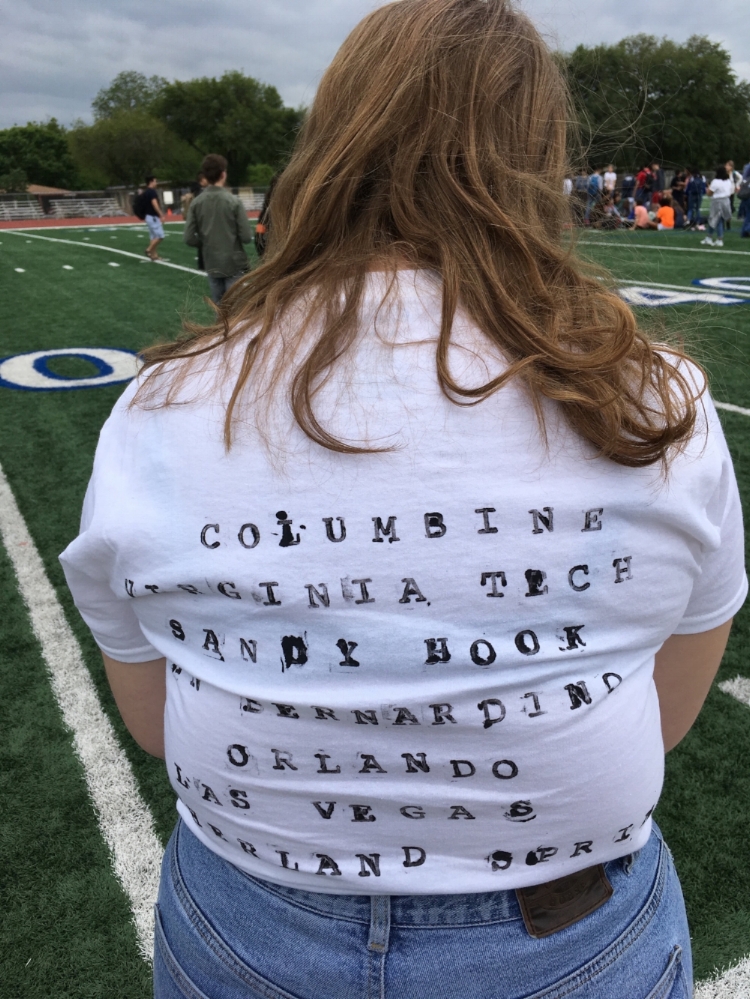How Do We Show Up?
This morning, on the 19th anniversary of the Columbine shooting, I stood on a high school football field in the heart of Texas, surrounded by students. Around 10:30, a young man with a bullhorn yelled, “Now!” and all around me, dozens of students dropped to the ground. They lay there, some holding up hand-painted signs, silent.
For seventeen minutes.
Their communal silence was a testament to their conviction and their power. Our kids have had enough of gun violence. They’ve had enough of politicians who won’t stand up to the NRA. They’ve had enough of empty promises followed by inaction and apathy. And so, they’re giving legs and a voice to their grief and their anger and their fear and their hope.
I sat down near the students and read the signs they held aloft: “How much am I worth?” one asked. Another asserted, “Fear has no place in my school.” Every few minutes, more students walked onto the field. A girl sat down nearby, orange paint streaking her cheeks. One boy kneeled, his jaw set, holding a heart-shaped poster board.
A staff member patrolled the outskirts of the group, grimacing. The noise from his walkie-talkie broke the silence. “Should kids have food out here?” he asked the person on the other end. Static, and then, a woman’s voice: "No. We’ve got to protect the football field.”
Twenty feet away, two girls held a closed box of donuts. They’d been selling them that morning to raise money for a local homeless shelter, excited that they'd made $60 so far. The man stalked toward them, whistling to get their attention. He pointed at them threateningly, gestured for them to leave. They looked confused. He kept trying to get their attention, picking his way through the students lying on the ground.
The contrast—students using silence to speak volumes about what matters and an adult more concerned about the health of the football field than about supporting them—was heartbreaking.
How do we show up for our students? It’s not about whether we should “give them permission” to protest; student protest doesn’t require or ask for our permission. It’s about how, when we find ourselves in these moments with them—moments that matter—we choose to engage.
Do we try to control them, like the man with the walkie-talkie and the donut vendetta?
Do we fear them, like an administrator who watched students from the parking lot with distrust on his face?
Do we silence them, like the staff member who confiscated students’ petitions?
Or do we support them, like the school leader who met with student organizers in advance to listen to their concerns and goals, then sat silently on the edge of the crowd during their protest?
Do we mediate for them, like the teacher who eventually stepped in to settle Donutgate?
Do we partner with them, like the teacher who rescued the students’ petitions and brought them onto the field?
Our students’ collective power can be scary to us as adults. It upsets the balance we’re used to, the tenuous agreement between adults and kids that school can sometimes feel to rest on. But if we are committed to our students not just as scholars, but as citizens, we’ve got to let go. We’ve got to be present for them. We’ve got to let them lead.
We’ve got to remember that protecting the football field is not more important than protecting our kids.
(April 20, 2018)

